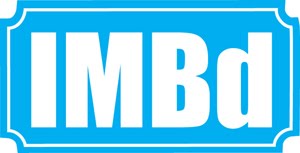*** out of ****
I can’t really disguise my enthusiasm. Without any
objectivity, I’ll geek-out out at the beginning of the review. The Hobbit: The Desolation of Smaug is pretty damn cool. Everything from the film’s opening - which
features the familiar setting of “The Prancing Pony -Inn & Pub” - to
three-hours later when a dragon is preparing to destroy a town – is filled with
amazing production design and thrilling sequences. Even one of the movie’s dumbest
sequences, in which the dwarves fend off vicious orcs as they roll down a white
water river in barrels, had me amused.
In the second installment of this new trilogy, Bilbo Baggins
(played by the excellent Martin Freeman) and the dwarves continue to evade the
orc hunting party as they take the dangerous path through a dreadful forest
where they are briefly taken captive by the woodland elves. After escaping, they
are successful in a making their way to a town on a lake which is just shy of
their final destination, The Lonely Mountain –where there is treasure and
terror in store. Meanwhile Gandalf (Ian McKellen) parts from the group to find
the powerful source of evil, which is beginning to spread through Middle Earth.
This is a movie that is bound to take just as much criticism
as the first Hobbit, for being a product of post-Avatar experience-cinema,
where narrative strength takes a backseat to thrilling spectacle. It’s also
hard to ignore the fact that this is a dark epic action odyssey based on a
light-hearted children’s novel. There’s something a little messier about this
series than the previous trilogy, but I look forward to having it in all in my
Blu-ray collection to save for those days when I’m under the weather and desire
nothing more than something lengthy, beautiful and mindless as I drift in and
out of consciousness on the couch.
An issue I take with most of Peter Jackson’s films is something
that a lot of action filmmakers don’t seem to understand: Showing characters survive
impossible odds may seem fun, but the more they escape danger in one piece, the
lower the stakes are. We need to feel afraid for them and if they’re
invincible, we feel nothing.
I love Peter Jackson but like all excessive directors, his
tendency to stretch things out has its ups and downs. Sometimes, special
effects shots look less polished than others. His comic silliness can be
successful just as much as it falls flat. New characters can add emotional
strength or they can bore us. Throwing the character of Legolas (Orlando Bloom)
into this story actually makes sense but his character overstays his welcome
and would have been better as a cameo. The subplot involving the Elf-hero and a
love-interest, Tauriel (the gorgeous Evangeline Lilly) is interesting but could
have been scrapped for time.
What’s wrong with The Hobbit Trilogy is that it’s a
trilogy and should have been one movie. An average person who goes to see it
just wants to enjoy a simple adventure story. There are so many subplots in
this film that I’m trying to figure what small percentage of the movie actually
featured Martin Freeman as our title character. People may enjoy binge-watching
an entire television season at home, but at the movies, they expect a more
condensed design. This film’s anti-climax only frustrated the people who
surrounded me in the theater -maybe more than the thirty-minute-climax of The Return of the King.
Like Jackson’s remake of King Kong, I like what it
delivers, but I doubt the majority of the audience is as enthusiastic. If the
studio really wanted to cash in, they could have tried simultaneously releasing
a two-hour cut for impatient people and a three-hour cut for people like me,
who just can’t get enough. Maybe the longer cut could have been reserved for
the High Frame-Rate 3D version only.
Speaking of HFR, I’m in awe of movies being shot at twice
the motion quality of what we’re used to. At the same time, I fear that Jackson
may have damned it by using this film series as its debut. My strongest opinion
of HFR is that it creates a greater contrast between what is real and what is
simulated. From digital effects all the way down to excessive camera movement,
I feel hyper-aware of what is being controlled. HFR shines when the camera
remains still and the content is authentically captured without special
effects. I have not seen such potential for the advancement of cinema in all my
life. I hope that it catches on and that it allows filmmakers to discover
non-traditional approaches to shooting a movie. Believe me, like the last
Hobbit movie, there are parts when it works wonderfully.

